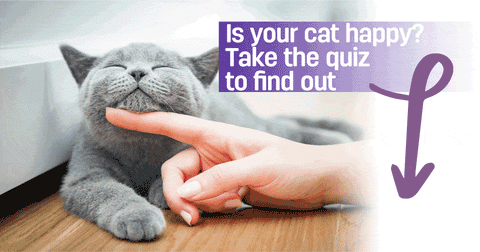
How Long Does It Take To Litter Train A Kitten?
When Should I Start Training My Kitty?
Cats, by nature, are very clean creatures and like to preen themselves regularly to remove loose hair, dirt and anything else from the coats!
Their toilet habits are no different - they like a clean, safe, and private place to go. So as being clean comes fairly naturally to cats, it shouldn’t take long to litter train your kitten when you bring them home. In fact, you may well find that they are well on their way to being fully trained, as they will usually have been introduced to a litter tray when they were still with their mum and siblings.
Here are some tips that will help:
18 Tips to Litter Train Your Kitty
Watch out for the signs!
1. When you first bring your kitten home, introduce them to the litter tray as soon as you can so they get the feel of the litter on their little paws. They may jump out straight away but give them time to explore and become familiar with it.
2. Put their litter tray in a secluded place and show them where it is. You may have to do this a few times, until they can find it themselves.
3. Keep the tray accessible at all times - don’t keep it behind closed doors.
4. If kitty meows or cries, it may be that they can’t find the tray so take them to it.
5. Cats and kittens normally need to use the litter tray within about 10 minutes of eating, so within this time, pick them up and take them to their tray.
6. If you see them pawing or kneading soft ground, you’ll know they want to go to the toilet.
7. Kittens like to squat when they go for a wee - so if you spot them squatting, pick them up gently and take them to their litter tray.
8. Change the litter in the tray frequently - cats are fussy creatures and like a nice clean loo. If the tray gets a bit dirty they won’t use it!
Reward your kitty
9. When your kitty uses the litter tray, let them know how pleased you are! A little praise goes a long way - as does a treat - and their association with the litter tray will be a good one.
10. Be patient - accidents will happen and definitely don’t scold if they don’t quite make it to the litter tray. Just clean the area thoroughly using an enzymatic cleaner to completely remove smells. If kitty can smell the urine residue, they are more likely to go in the same spot again. Never use bleach as this can smell like urine and have the same effect.
11. If they have a few accidents and don’t seem to be getting the message, you may want to get them checked by a vet just in case there’s an underlying condition that may need to be treated.
Consider location!
12. Make sure your kitty knows where to find the litter tray. They do like privacy so behind a chair or in a secluded corner and away from house traffic is good. Like humans, they like to be private when using the toilet.
13. Also keep the litter tray away from any loud noises, like a washing machine, as this may make them nervous or scare them.
14. If your pussy cat has the freedom of all of your home - you should also consider putting a litter tray on all floors of your house as well.
15. Don’t put the litter tray close to food bowls - cats don’t like to eat near their toilet either!
Cats are fussy!
16. Cats are not keen on sharing litter trays, so if you have more than one cat in the house, make sure each cat has a litter tray of their own - and one extra to be on the safe side.
17. Make sure the tray is the right size for your kitten and that it will still fit when she grows but also make sure that when she is little, she can get in and out easily.
18. You may have to try out a few types of litter side by side to find the one that suits your pussy cat best. Some cats prefer litter that is similar to sand or soil and some don’t like a scented or course litter so try a few and see what they prefer and what makes them comfortable!
Try FELIWAY
Creating a calm, supporting kitty environment can help your pet to learn faster, and feel secure. The FELIWAY Diffuser is designed to do just that, producing a natural comforting cat pheromone that can reduce stress and help your kitten settle into her new home so that litter training will be less stressful and more efficient.























